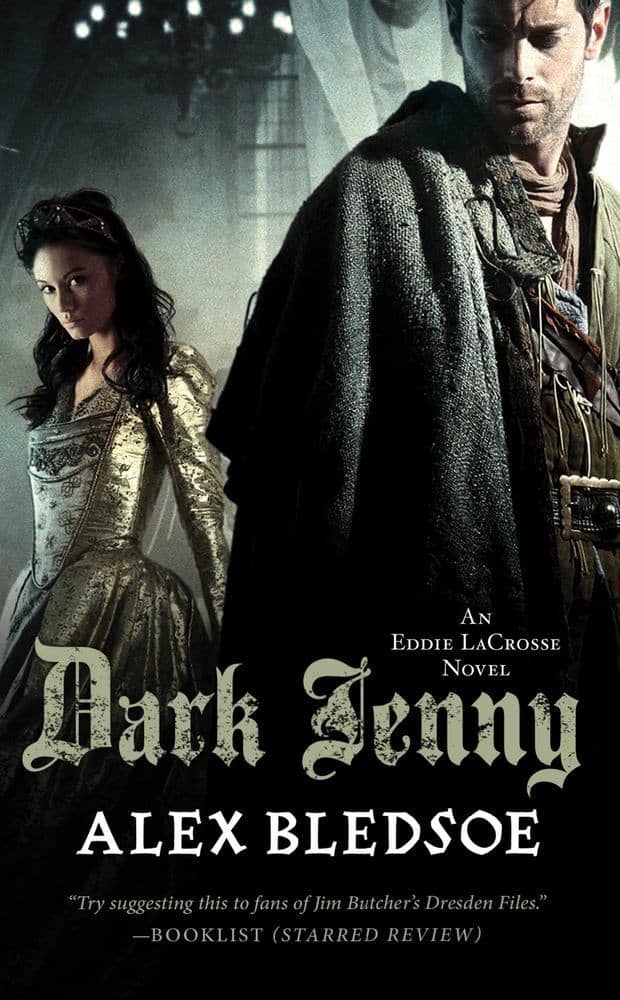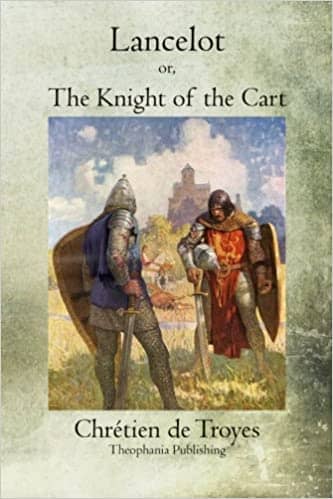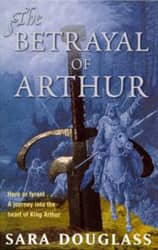
Recently Zack Snyder was in the news announcing his plans for a “real sort of faithful retelling of that Arthurian mythological concept,” according to multiple sources. I and many others immediately understood that Snyder was already off-course, because there is no single source of Arthurian lore, and therefore there can be no “faithful” retelling. Each creator who tackles King Arthur, including me, brings their own perspective to it. There’s no Arthurianur-text, no Camelot Bible, just a big pile of stories that we can choose from or add to.
I know this because I’m anobsessivewriter. By that, I mean that when I decide to write something, be it things that aren’t real (dragons, vampires) or things that most definitely are (pirates, feral hogs), I immerse myself in all available information about them, looking for proverbial details so weird that you can’t invent them. There are pitfalls to this, such as the time my then ten-year-old son had to remind me I was writing a fantasy novel with pirates, not a historical pirate drama, and needed to stop with the details of sail rigging and put in a sea monster.
Also, for the most part, when I finish a project, I usually exhaust my obsession with the subject. I would get chills when I heard Fleetwood Mac’s “Rhiannon,” for example, but after I used it as the inspiration for my first novel,The Sword-Edged Blonde, it became just another good song.
The one exception to this is King Arthur.
I was a college freshman the yearExcaliburhit theaters, and it affected me as fundamentally asStar Warshad four years earlier. Forget Disney cartoons or sterile MGM epics: here was an Arthur who looked like a biker, an earthy, hippie-chick Guinevere, and a Lancelot whose shield gleamed like a solar panel. A knight had sex without even taking off his armor(!), bloody sword battles gave us dismemberments and beheadings, and Nicol Williamson played Merlin on the edge between camp and grandeur. I was hooked in a way no prior storybook, novel, or movie on this subject had ever grabbed me.
Thirty years later, my Arthurian novel,Dark Jenny, was released. It’s the third in my Eddie LaCrosse series, about a guy who’s essentially a private eye in a secondary fantasy world. The Arthurian characters have new names—my editor at the time quite sensibly pointed out that combining my created world with such a well-known mythology might be problematic—but I don’t think anyone could miss that King Marcus Drake is really Arthur Pendragon, his wife Jennifer is, of course, Guinevere, and his best friend is the knight Elliot Spears (spear=lance, i.e., Lancelot). Plus, this change allowed me to use my favorite epigram ever, fromA Hard Day’s Night:
Reporter: What do you call that hairstyle you’re wearing?
George: Arthur.
Yet, when I finishedDark Jenny, I found that I had not exorcised my fascination with the subject. Even now, almost a decade later, I still read copious Arthuriana, both fiction and non-, and find myself intrigued by what remains of one of the core mythologies of Western civilization. I’ll watch any Arthurian movie or documentary. Recently, as I started reading yet another book on Arthur, I wonderedwhy?Why did this, of all things, keep my interest?
There are two major aspects to King Arthur: the historical and the literary. Don’t get me wrong, the historical is interesting, as archeologists try to find evidence of the real fifth-century battle leader who, if he existed at all, inspired the first oral tales. But it’s the literary side that really attracts me. The idea of a man with no super powers (those belong to Merlin) and no real preparation for ruling (he was raised, by most literary accounts, in ignorance of his royal parentage) having both the courage and the insight to create, no matter how briefly, that “fleeting wisp of glory called Camelot” is fuckingpowerful. Then the poor bastard has to watch it all come down around him. There is no greater pain than seeing something you love die in front of you.
I must admit, I have a lit-crush on Guinevere, a character who had to wait 800 years to be given her own voice. Until the end of the 20th century, even when she was allowed to speak her mind, (male) writers rarely sympathized with her—I’m thinking particularly of the misogynistic monologues Alfred, Lord Tennyson gives her inIdylls of the King. There are so many odd bits to her story, likely based on folklore we now lack the references to untangle: in some stories Arthur marries not one, not two, butthreewomen named Guinevere; in another story (the one that inspired the plot of my novel), Guinevere has an identical, evil, half-sister also named Guinevere.
Guinevere doesn’t accept limitations. The daughter of King Leodegrance in most versions, she’s well-aware of what’s expected of her as Arthur’s queen, likely more than he is about a king’s duties. She steps into her role with confidence, demonstrating by example the chaste, chivalric love that fuels the Arthurian court. And everything is fine until it’s no longer chaste.
But that’s part of Guinevere’s appeal, as well. Whether genuinely in love with Arthur or part of an arranged marriage with a cold and distant ruler, Guinevere dives into her affair with Lancelot with eyes wide open, understanding the risks and dangers but believing that her own happiness is worth it. There are many different stories of how it begins (my favorite being T.H. White’s, who unlike most authors makes Lancelot an ugly, battle-scarred warrior, his exterior a perfect reverse mirror of his pure and honest heart), but it always ends with Guinevere as a major cause of Camelot’s fall. As a result, she finishes her life in a nunnery. There’s a seldom-mentioned movie, called eitherSword of LancelotorLancelot and Guineveredepending on the print, in which Guinevere, having seen the carnage of war first-hand and helped aid the wounded, willingly becomes a nun in order to be of tangible, genuine use to the world. I’ve always liked that twist because again Guinevere chooses her own path.
Not that literary history tends to highlight this. Since she’s been primarily written about by men up until recent times, her personality and relationship with Lancelot are often portrayed in a limited scope with authors picking from a handful of known tropes. Thus the fall of Camelot might be the result of her own Eve-based moral failures (see Tennyson most egregiously), or the desperate attempt of a lonely woman emotionally abandoned by her kingly husband, or the self-possessed stand of a queen the equal of her king who believes herself to be worthy of love (my favorite). In one modern novel, Lancelot is a woman in disguise, and in another, Arthur’s nemesis Galehout was secretly in love with Lancelot, adding more complications (or spice) to what is already a knotty little triangle. But through all this, even when she’s being petulant as in De Troyes’The Knight of the Cart, Guinevere maintains a dignity that can’t be fully tarnished, despite the best efforts of all those guys trying to minimize her. And that endears her to me.
Lancelot, too, is a fascinating character, universally considered the “best knight in the world,” but fatally flawed by his love for Guinevere. What makes him so tragic is not that he betrays his king and his kingdom, but that God himself passes judgment on him by allowing him to see the Grail but never reach it. Further, much like Arthur unwittingly fathers Mordred, Lancelot is tricked1into becoming the father of the knight whodoesfind the Grail, Galahad. Watching his son accomplish the single most important task any knight will ever have, and knowing that he himself can’t do it because of his own sin (in the concept of the times), must absolutely twist the poor guy up inside. Yet he doesn’t change: he remains both Guinevere’s lover and the Round Table’s best knight until, to paraphrase Yeats, the center can no longer hold.
Oddly, the one character who absolutelyboresme? Merlin. Whether depicted as a real wizard, a Druid, a mystic, or simply a man with more sense than most, Merlin is, without a doubt, afailure. He foresees all the wrong things, his enchantments never work as he intends, and he is ultimately led by his dick to his doom. He’s the one character who supports the widest interpretations, because it’s all an attempt to make him what he clearly isn’t:wise.Hemustbe a failure for the story to reach its tragic, magic conclusion; an accurate wizard makes for a boring story. My novel’s Merlin figure was based (very loosely) on Jerry Garcia, and Nimue is hisAlmost Famous-like groupie, because at least it made his failures interesting (to me).
So if everyone in the stories of Camelot ends up failing, why do Merlin’s failures bore me while those of Arthur fascinate me? Primarily because I see myself in Arthur. Arthur is raised as a small town boy, unaware that his father was King Uther Pendragon. His foster father, Sir Ector in many versions, is also unaware of Arthur’s origins, taking him in as a baby at Merlin’s behest (one of the few things Merlin gets right). I love Ector’s explanation in the movieExcalibur: “At first, I [raised you as my own] because I feared Merlin, but later because I loved you.” That tells you everything you need to know about how Arthur’s upbringing prepared him to be a new kind of king.
And Arthurtries. He triesso damn hard.He wants Camelot and the Round Table to be new standards of what’s right and just, but he can’t micromanage all his knights, and thus they stray from his example. He wants to be a good husband, but feels he has to be a good king first, which means he lets Lancelot do all the heavy lifting to rescue Guinevere when she’s repeatedly abducted (and we know howthatworks out). He wants the approval of God, yet does some pretty horrible things, such as drowning a ship full of babies in an attempt to kill his prophesied destroyer. He’s the best of our aspirations and the worst of our failures.
From my earliest days as a writer, I’ve wanted to do something Arthurian. As a young adult, in the full flush of my post-Star WarsandExcaliburenthusiasm, I outlined a trilogy of Arthurian novels. Later, after reading manyothertrilogies of Arthurian novels, I realized I wasn’t bringing anything substantially new to the table. Instead, I concentrated on creating my own fantasy worlds, all the while devouring the vast library of existing Arthuriana.
Many years later, when I finally wrote my Arthurian novel, I remembered two particularly compelling stories. One was the “False Guinevere” tale from the 13th century in which Guinevere’s identical half-sister hatched a plot to replace the queen in Arthur’s court. It involved love potions, battles, court intrigue, and the most unlikely reconciliation of all time (“Aw, honey, like the song says, you can’t call it cheatin’ cuz she reminds me of you”). I kept going back to the concept of half-siblings (same father, different mothers), born on the same day at the same time, and so identical not even one’s husband could tell them apart. Could I make that idea work in realistic terms?
The second story came fromLe Morte D’Arthur,the touchstone of everything Arthurian, in which Guinevere is framed for killing a knight with a poisoned apple. The evidence is clear, there are many witnesses, and it looks like curtains for our queen, until Lancelot comes to her aid and the Lady of the Lake unmasks the real killer. This was a neat, self-contained tale that allows, within its framework, all the major figures to demonstrate their strengths and weaknesses.
(Ironically, another author—J.M.C. Blair, also, believe it or not, based in Wisconsin like me—had used the same story of Guinevere and the poisoned apples as the inspiration for his 2008 book,The Excalibur Murders,which I didn’t read until many years after my own appeared. But we came at it from very different directions and for very different ends. It’s just another example of how rich this field is and how much awaits anyone who enters it.)
Since these two tales were, at heart, crime stories, they would fit perfectly with my own noir/fantasy world. And I feel like they did; the names may have been changed, but the themes and concepts remained identifiably Arthurian.
As I worked out the first draft, I also read several books exploring the Arthurian mythos and delving into its symbols, meanings, and sources. One book that helped me the most was the 1999 nonfictionThe Betrayal of Arthur,by Australian fantasy novelist Sarah Douglass (1957-2011). It dug into the historical basis of the character, but with a novelist’s flair and understanding, and it was like a curtain opened for me onto the motivations of both the characters, and the classic authors who gave them the stories we all know.
And my fictional touchstone?Excalibur. Nigel Terry will always be the king in my head, and Cherie Lunghi’s Guinevere is my absolute ideal. Of course, as I worked on my novel my creations became their own people, as they should; but inside them are the images that John Boorman and Rospo Pallenberg conjured.
To answer my question—why, after all this time, after writing a novel about it, does this still keep my interest?—I think it’s because there’s so damnmuchof it. For every landmark likeLe Morte D’ArthurorThe Once and Future King, there are a hundred variations that reveal things I’d never considered before. Each character, no matter how minor, seems to have been explored and developed by someone, somewhere. On the nonfiction side, new discoveries are always being made, revealing more about the time the historical Arthur may have lived, even if there’s been no confirmation of his existence…yet. The point is, this shitnevergets old, and I’m definitelynottoo old for this shit.
In fact, I’ve thought often about writing another King Arthur novel. That old trilogy outline still sits at the back of my mind, tempting me when my guard is down, or when I read or see a version of the story that doesn’t work (like the recent filmKing Arthur: Legend of the Sword,or the dire HBO seriesCamelot). Like many writers, I’ve considered coming at it from the side, using a lesser-known character as my POV, or inventing someone to mingle with the usual suspects. Or I might once again expand a single bit of the story, but there’s also the urge to tell the whole thing, to finally bring out meanings that have eluded the last 1,500 years of writers.
At the same time, it’s such a well-populated field and much better writers than me (such as Nobel- and Pulitzer-prize winning John Steinbeck) have found it difficult to wrestle it into submission. I mean, the definitive version was written 500 years ago, and like Shakespeare and James Bond, no one has done it better. So, it’s likely I’ll just be happy I got away with it once and remain an ardent fan of the writers more ballsy than me who kick open the doors of Camelot and run rampant through its court.
Author’s note: in addition toThe Betrayal of Arthurmentioned above, some of my favorite nonfiction books areThe Once and Future Queen: Guinevere in Arthurian Legendby Nicola Evelina,The Figure of Arthurby Richard Barber,The Book of Guinevereby Andrea Hopkins, andThe Complete King Arthurby prolific Arthurian author John Matthews. I make no claims for these being the best, or for their speculations on history and literature being accurate, but they all proved useful resources forDark Jenny.
My favorite Arthurian novel isThe Wicked Dayby Mary Stewart, my favorite movie is (of course)Excalibur,followed closely by Robert Bresson’sLancelot du Lac.I’m in the middle of reading a new novel,Queen of None, about Arthur’s forgotten sister Anna, by Natania Barron.
1 “Tricked” is a polite word for it: Lancelot is brought into a darkened chamber where he thinks he’s hooking up with Guinevere, but it’s actually the lady Elaine, who loves him from afar. And Lancelotdoesn’t notice, which says a lot about his powers of observation, his devotion to his girlfriend, and his general intelligence.















